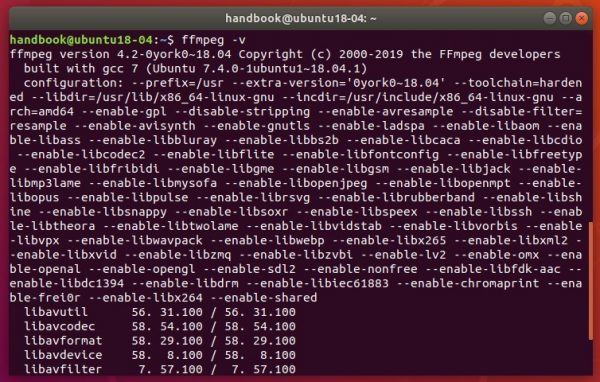
Install the software-properties-common package.Open the Terminal and log in as a root user.Here’s how to install FFmpeg via the PPA: However, the installation must be done via the default repository if your machine runs Ubuntu 20.04 or 22.04. The former contains a collection of software managed by the Ubuntu community and works best on Ubuntu 18.04 and older versions. There are two methods to install FFmpeg on Ubuntu – via the Personal Package Archives (PPA) and the default repository. In this section, we will explain how to set up FFmpeg on popular Linux distributions like Ubuntu, Debian, CentOS, Fedora, and RHEL. Installing FFmpeg on CentOS, Fedora, and RHEL.Also purging the FFmpeg PPA may also remove some apps for unknown reasons :(. You can purge the Ubuntu PPA which will also downgrade FFmpeg libraries to the stock version in Ubuntu.

Once installed, run command to check software version: ffmpeg -version It may keep back FFmpeg since old libraries may be required for some apps, Pitivi in the case. NOTE: using Software Updater is not recommended in the case.

So you can run command to upgrade it in terminal: sudo apt full-upgrade Type user password (no asterisk feedback) when it asks and hit Enter to continue.įor newest versions of graphics and multimedia dependencies, you can also add the following PPAs by running commands one by one: sudo add-apt-repository ppa:savoury1/graphics sudo add-apt-repository ppa:savoury1/multimediaĪs a widely used media library, it’s mostly installed on your system. When it opens, run the command below to add the PPA: sudo add-apt-repository ppa:savoury1/ffmpeg4 It may remove your applications or cause dependency issue for some multi-media apps that depends on specified version of a media library.įirstly open terminal either from system app launcher or by pressing Ctrl+Alt+T on keyboard. Upgrading FFmpeg is not recommended for beginners unless you know what you’re going to do.


 0 kommentar(er)
0 kommentar(er)
